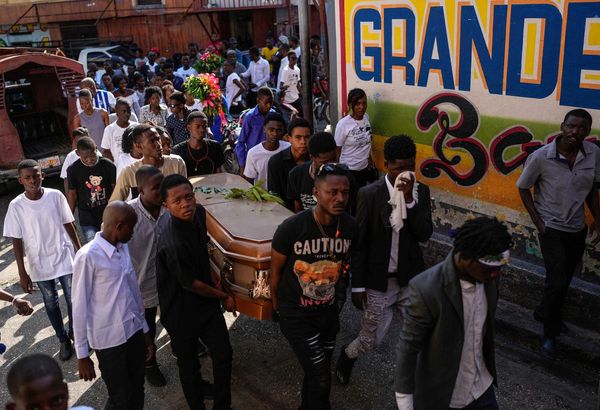
Promising signs that inflation was moving in the right direction have been rocked by a stronger than expected reading for the March quarter.
Experts are now questioning whether the Reserve Bank’s next move will to cut the cash rate or raise it. The RBA board will soon receive briefings for its 6-7 May meeting, including an update of the central bank’s main forecasts.
Here’s what we know.
Is the RBA about to raise its cash rate?
The RBA’s cash rate now sits at 4.35%. Investors think the board is unlikely to raise it this month. If it does, it would be the 14th increase in two years and the first since November.
Hopes for a near-term rate cut evaporated after the March CPI figures landed. According to Bloomberg, bets have switched to favouring a rate rise by the end of 2024.
Most commentators don’t believe a rate hike is imminent. Capital Economics is so far one exception, arguing that a May increase is more likely than not.
None of the big four banks expects the RBA’s next move will be an increase, with all still forecasting a rate cut in time for Christmas.
What clues has the RBA given?
The central bank has remained basically silent since its 18-19 March meeting, with no speeches of note and none planned before its meeting next week.
But the RBA governor, Michele Bullock, said the war against inflation “isn’t yet won”, and the risks to its outlook remain “finely balanced”.
Until now, that battle had appeared to favour a cut as the next shift. The words “a further increase in interest rates cannot be ruled out” in previous RBA statements had morphed into a more neutral “the board is not ruling anything in or out”.
The subsequent release of the March meeting’s minutes also showed the RBA had considered just one option for the first time in many months: leaving the cash rate on hold.
What’s the case for another rate hike?
Judo Bank’s chief economic adviser, Warren Hogan, says the RBA may need three rate rises – to 5.1% – to ensure that the inflation threat is extinguished.
Hogan argues the Australian economy hit its “soft spot” last year and has since begun to recover, with many able to withstand higher borrowing costs thanks to the Covid-era savings they socked away.
“The economy itself is actually quite resilient to interest rates,” according to Hogan, who was assessed by the Australian Financial Review as the top economic forecaster of 2023.
March jobs figures, with almost 28,000 full-time roles added, consolidated a surprise slide in the jobless rate in February. Business surveys also show an uptick in confidence.
“These really highlight that the economy is on a stronger trajectory than the RBA was expecting,” Hogan said.
“The narrow path is about doing something we’ve never done before anywhere in the modern world – that is get rid of a major inflation without a recession. It’s never happened.”
What’s the case for the RBA holding fire?
Those calling for caution say the March inflation figures were only slightly higher than expected, after five months of under-guessing.
John Hawkins, a senior lecturer at the University of Canberra and formerly an economist at Treasury and the RBA, notes the central bank was expecting headline inflation to be 3.3% by June. The March result of 3.6%, down from December’s 4.1%, meant inflation was on the right track.
Consumption has also been consistently weak. Figures out on Tuesday showed retail sales fell 0.4% in March compared with economists’ forecasts for a 0.2% increase. Spending was up just 0.8% from a year earlier, well shy of both population growth and inflation.
“I don’t think there’s anything else that indicates inflation is a lot worse now than it was a few months ago,” Hawkins said. “Inflation is still heading back to the [2 to 3%] target at a pace that’s acceptable.”
Some of the CPI increase came from yearly education and pharmaceutical increases that always land in March, which won’t be repeated in June. Higher petrol prices of late do lean the other way but core inflation trends probably won’t budge.
That other economies, such as the US, might be struggling to rein in inflation, doesn’t mean Australia would necessarily follow suit. Some commentators “slavishly follow what’s happening in the US to an undue extent”, he said.
The US Federal Reserve meets from 30 April to 1 May and may say few if any rate cuts will happen there this year.
What should we look out for?
Assuming the RBA leaves its interest rate on hold for a fourth consecutive meeting, Bullock’s comments at the subsequent media conference on 7 May should be carefully parsed.
Did the bank consider a case for lifting its cash rate? What might force its hand when its board next meets on 17-18 June?
By then, we’ll also have other information. For instance, will the 14 May federal budget stoke inflation going into an election year?
March quarter wage price index figures land on 15 May. The February numbers finally exceeded CPI after a couple of lagging years but a strong salary spike won’t please the RBA.
The RBA will be guided by its updated quarterly statement on monetary policy. Watch for a lowering of its February prediction of a 4.2% jobless rate by June. Now at 3.8%, a number closer to 4% can be expected.
But the outlook for inflation goes the other way. The RBA had been expecting the core – or trimmed mean – inflation to measure 3.6% by June and 3.1% by December.
Given it was 4% in March, down from 4.2% in December, this gauge will be closer to 3.5% by the year’s end and perhaps won’t be back to the 2% to 3% target range until 2026.
It’s this stickiness that will determine whether and when we get more pain or relief from the Reserve Bank.







